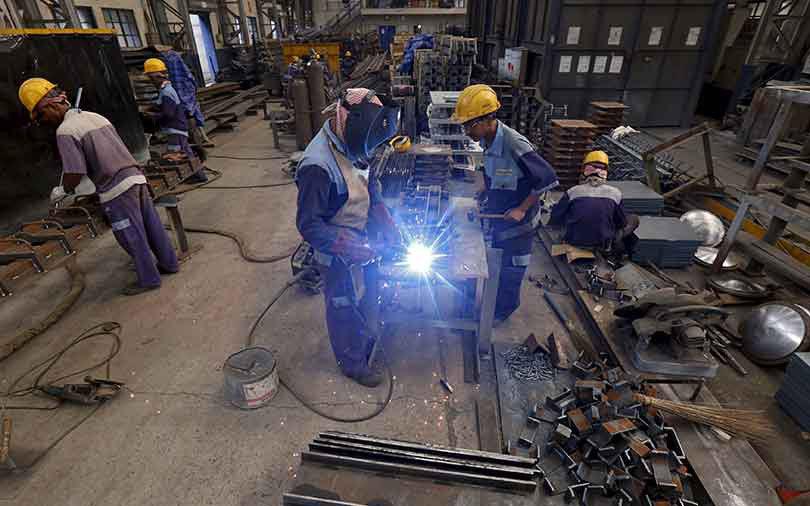Indian manufacturers defied expectations for a slowdown and expanded activity at the fastest pace in four months in October, boosted by increasing new orders, a private survey showed on Thursday.
The Nikkei/IHS Markit Services Purchasing Managers' Index rose to 53.1 last month from 52.2 in September, its highest since June and above a Reuters poll consensus of 51.9.
It has been above the 50-mark that separates growth from contraction for 15 months.
"Manufacturing continued to make up for ground lost in August, with a robust and accelerated rise in new orders boosting production growth in October," noted Pollyanna De Lima, a principal economist at IHS Markit. "Consumer, intermediate and investment goods output all increased at stronger rates."
A sub-index showed total new orders increased at a faster pace, though growth in export orders moderated slightly.
That encouraged firms to raise output at the fastest pace in four months, which helped increase hiring to the highest pace this year.
"The trend for employment was particularly encouraging, with job creation at a ten-month high. Firms sought to increase their competitive edge, with marketing activity and investment in research and development, which meant business sentiment remained positive," added de Lima.
"However, goods producers see challenges and uncertainties ahead, which in turn translated into the weakest degree of optimism seen in 20 months."
The survey also showed both output and input prices rose at a slower pace.
Combined with a decline in oil prices over the past month that will likely keep retail inflation below the Reserve Bank of India's medium term target of 4 percent for a third consecutive month in October.
While the central bank surprised markets by keeping interest rates on hold last month after several increases, it shifted its bias from "neutral" to "calibrated tightening" in a nod to pricing pressures.






